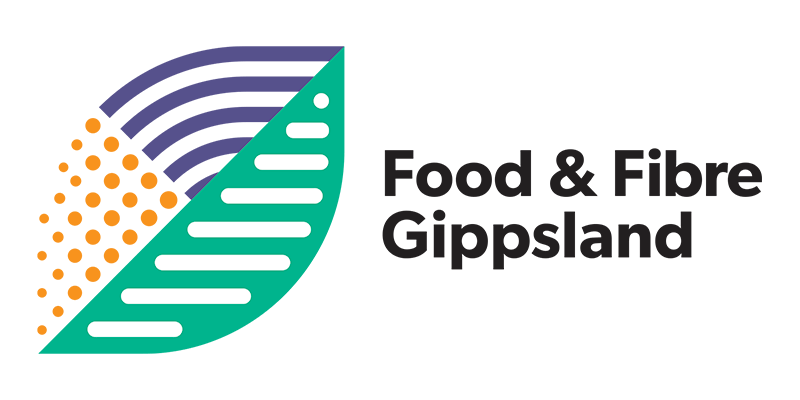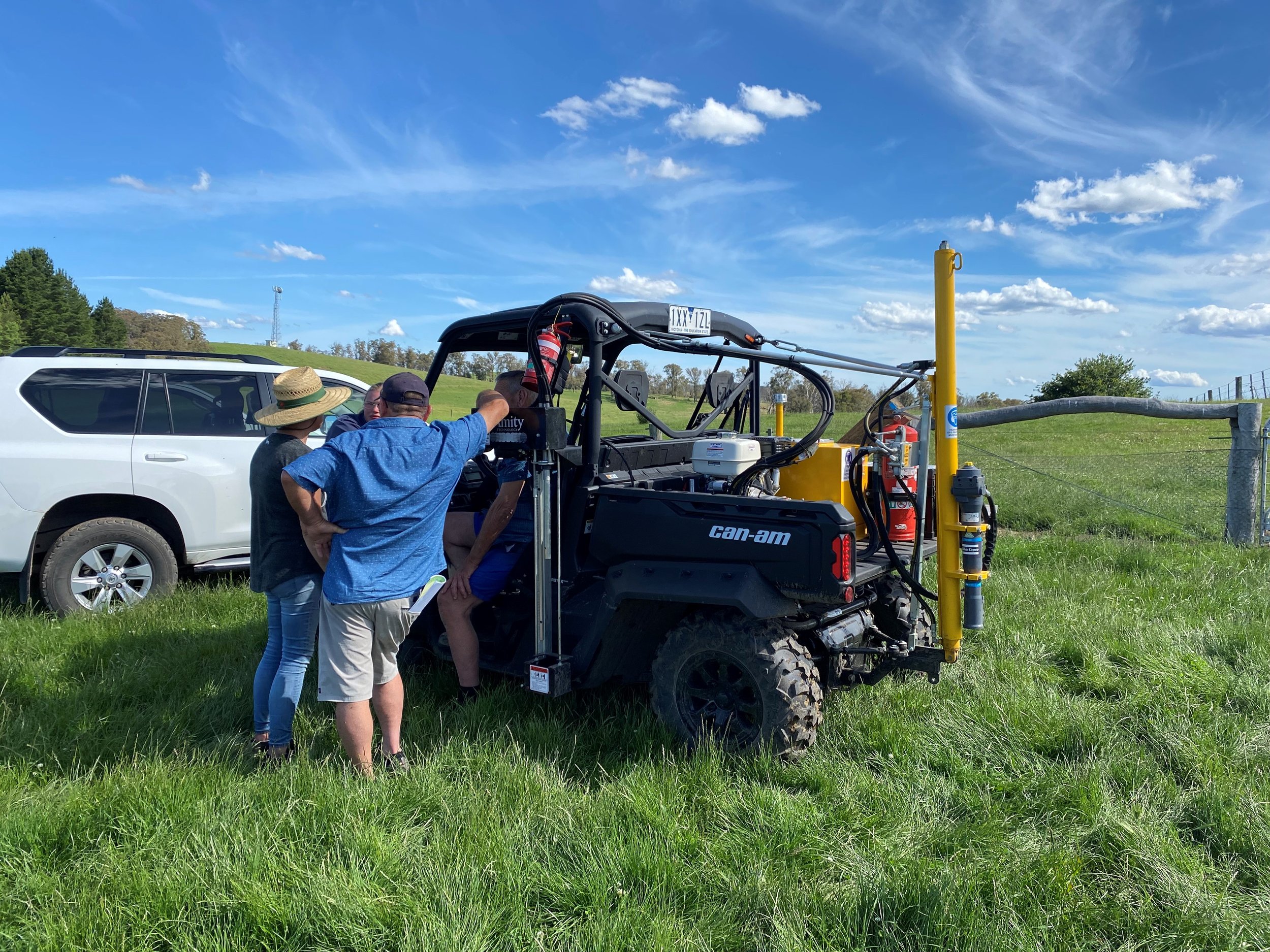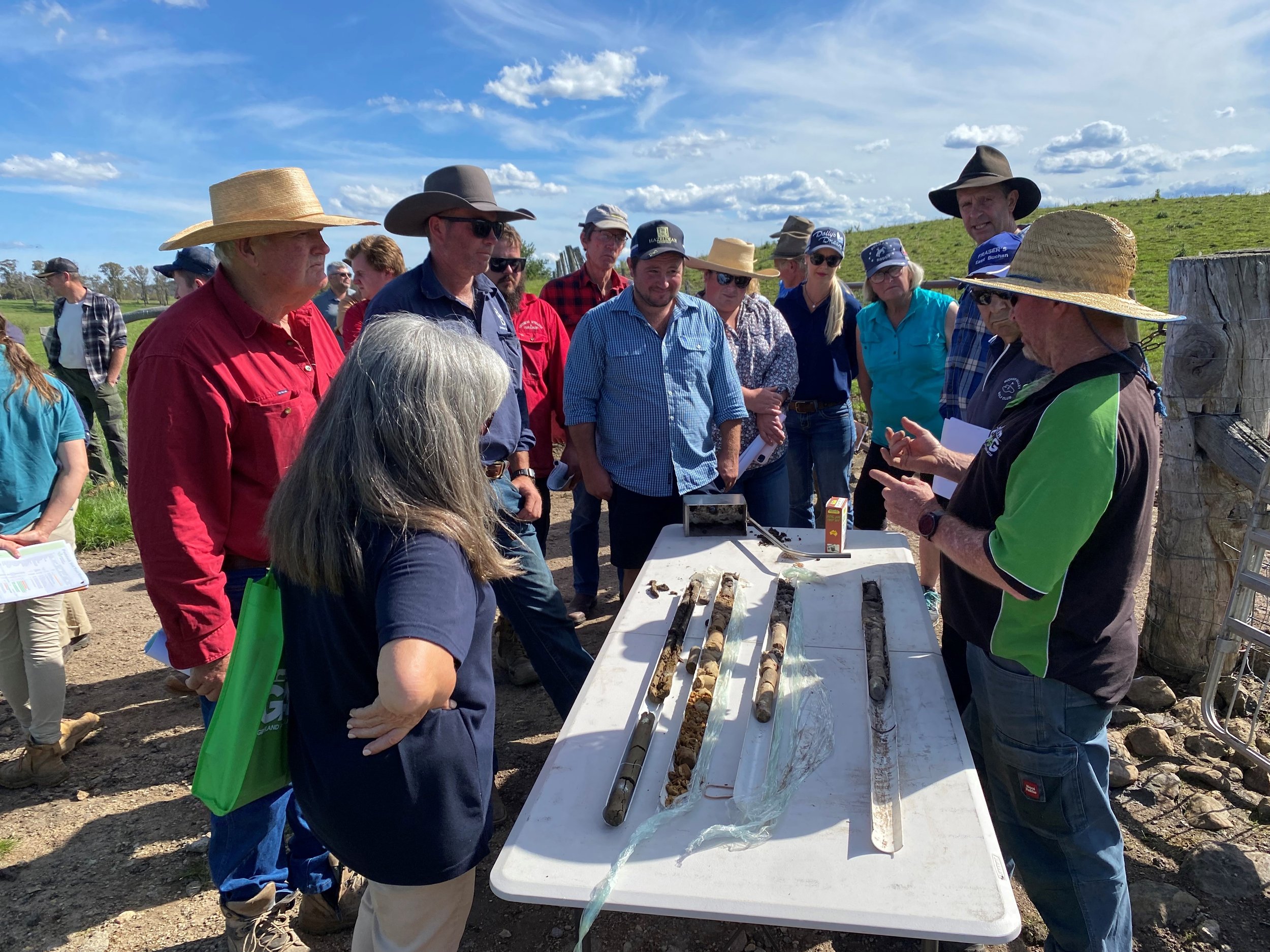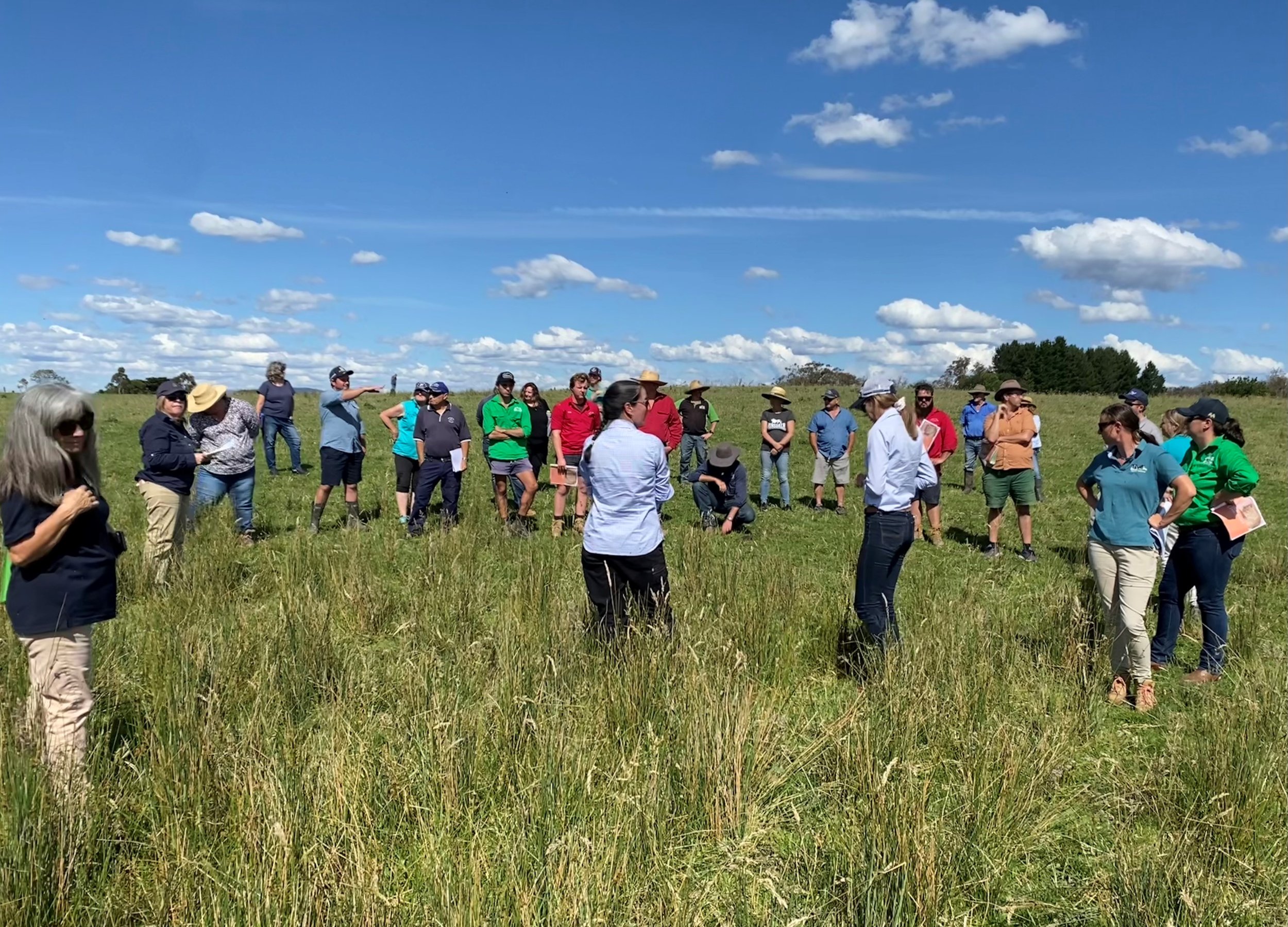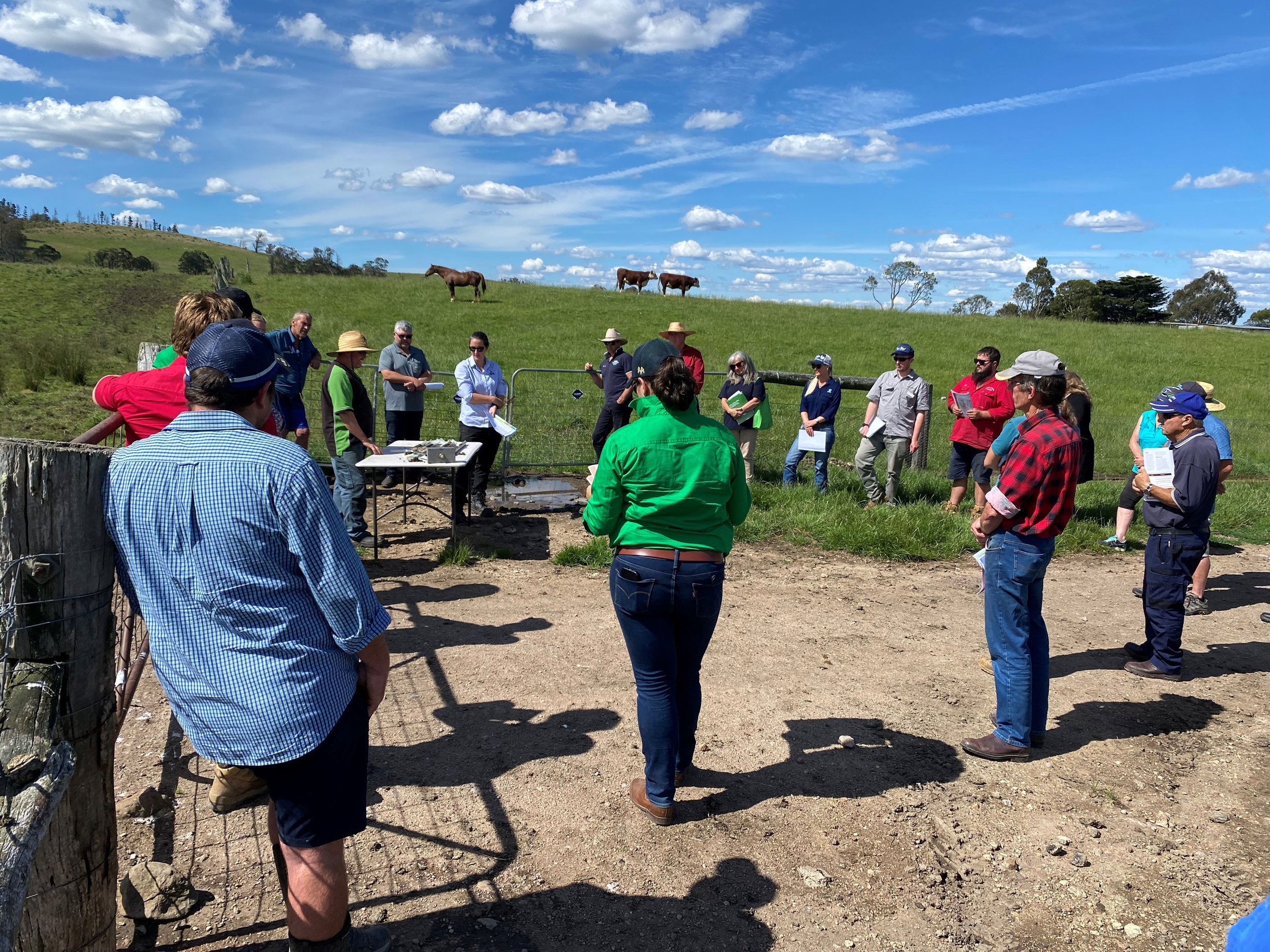Soil coring project builds greater understanding of drought preparedness
Through the Victoria Drought Resilience Adoption and Innovation Hub (Vic Hub), Food & Fibre Gippsland has supported the employment of specialist adoption officers by Gippsland Agricultural Group (GAgG). The adoption officers have been operating a custom-built coring machine on-farm, assisting producers gain a better understanding of their soil profile and its specific needs or attributes.
A truly collaborative project, this work has been made possible through the provision of a soil coring machine by Wellington Shire Council. The project has enabled the invisible to become visible, with the machine travelling to more than 60 farms in the last 12 months and in the process, conducting deep soil coring to determine soil health, structure and nutritional profile across Gippsland.
GAgG have shared an insight into what the project means for drought preparedness within our region.
The recent soil coring workshops have opened many local producers' eyes to what's happening within their soils, and what they can do to be proactive for when the next dry hits.
By way of the soil samples taken on their properties, farmers are being shown pH levels so they know whether to apply lime or add fertiliser, which in turn will help plants in that soil hold on for longer when it gets dry.
They also start to understand the different root systems of plants will break up soils in different ways, allowing any available moisture to penetrate downwards.
“If you can increase the organic carbon levels within your soil by just 1%, it equates to an increase in water holding capacity of more than 200,000 litres of water per hectare.”
Gippsland Agricultural Group chief executive officer, Trevor Caithness, says one of the great advantages of the soil coring project throughout the region has been allowing farmers to identify what constraints they are working with in their topsoil and subsoil.
“Being able to identify some of their soils that are actually very suitable for deep rooted plants like lucerne, herbages and/or perennial pastures that have a fantastic ability to hang in through a very dry period, and access moisture which might be deep within the clay or subsoil, is such an advantage,” he said.
“There has also been robust discussion among farmers around the advantages of increasing overall soil fertility, and that correlation between soil health and being able to hold onto soil moisture in dry times.
“If you can increase the organic carbon levels within your soil by just 1%, it equates to an increase in water holding capacity of more than 200,000 litres of water per hectare.”
GAgG general manager, Jen Smith, said the soil coring project was helping farmers shape preparation for the next drought.
“This program gives us the capacity to work one-on-one with farmers. We really get to the specifics of what's happening within each farming system and we’re able to tune in to the specific factors to aid the farmers’ ability to be prepared,” Jen said.
“Our drought adoption officers are assisting to really move the dial on greater resilience and drought preparedness within those businesses.
“We’re lifting the collective knowledge base – farmers get curious and start to ask questions; you could say it’s creating longer-term investment in that collective knowledge.”
Jen believes that the understanding built by working with individual farmers is having a cumulative impact.
“It’s that compounding effect, when we each do better, we all do better.”
Images, above: GAgG recently conducted a workshop at Gelantipy in East Gippsland, with the aim of providing insights, discussion and information to help deepen participants' understanding of soil health (workshop images supplied by GAgG).
